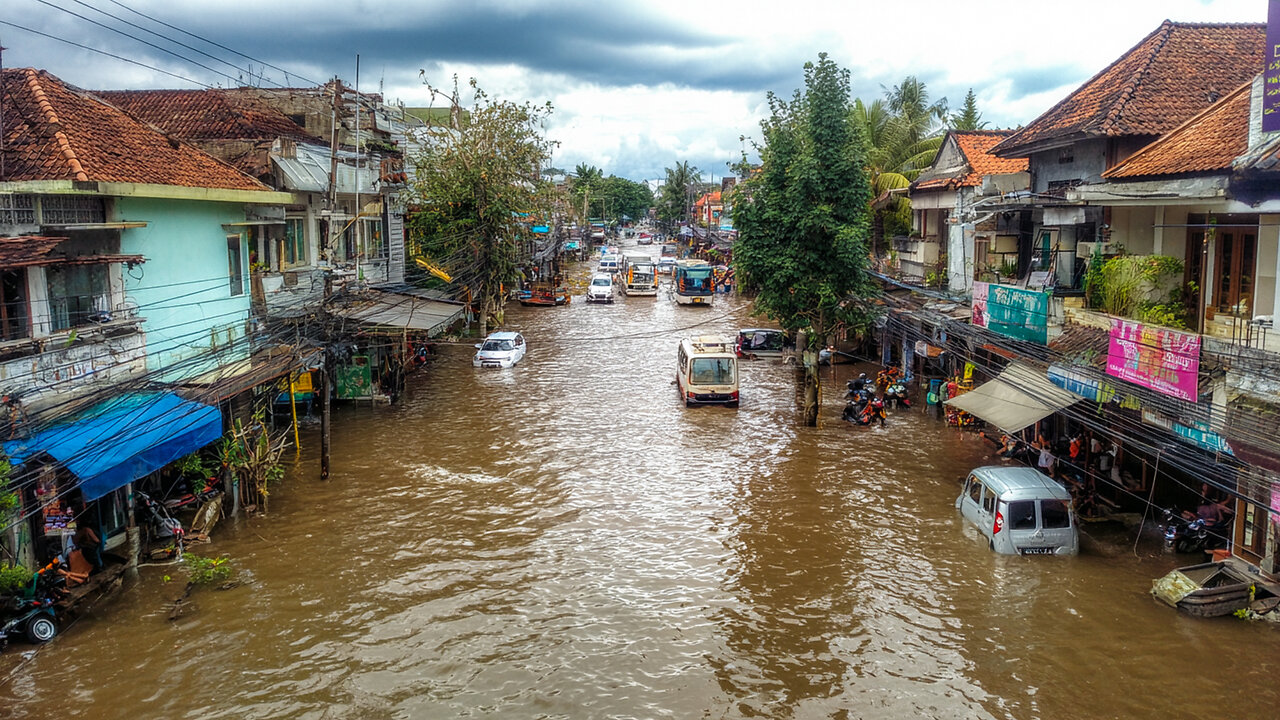Premium Only Content

Tourist Island Bali Overwhelmed by Torrential Rains and Deadly Floods
On September 10th, torrential rains caused the worst flooding in decades on the island of Bali — one of Indonesia’s most popular tourist destinations.
The disaster struck six out of the island’s eight districts, as well as the provincial capital, the city of Denpasar. Rivers overflowed their banks, flooding streets, residential homes, temples, and tourist areas. Landslides blocked roads, destroyed bridges, and restricted access to Ngurah Rai International Airport, the main transportation hub for travellers arriving in Bali.
In Denpasar, two buildings collapsed, and in some neighborhoods the water level reached up to an adult’s waist. Hotels, banks, office centers, and even hospitals were forced to close. In one market, the entire first floor was submerged, while the second floor was coated in a thick layer of mud.
Power supply was disrupted in several areas: at the regional hospital, surgeries were carried out using generators. In the Kertalangu tourist complex, the water reached the ceilings, and children had to be rescued through the attics.
Popular beaches and landmarks were covered with debris, and many tourists were evacuated. Authorities declared a state of emergency on the island.
As of September fourteenth, the floods had claimed at least seventeen lives, with five more people still reported missing.
Such abnormal rainfall intensity is explained by record ocean warming and increased atmospheric moisture, but also by a factor that is still rarely considered in forecasting models — the presence of micro- and nanoplastic particles in the atmosphere.
More details on this can be found in the video “Why Turbulence Is on the Rise? Egon Cholakian on Atmospheric Anomalies and Nanoplastic Pollution.”
-
 31:06
31:06
AllatRa TV
9 days agoThe Kamchatka “Anomaly” Is Only the Beginning of Global Catastrophes | Egon Cholakian
2302 -
 7:13:47
7:13:47
SpartakusLIVE
10 hours ago#1 Mountain of Muscle with HUGE Legs saves your weekend from complete BOREDOMNight HYPE
45.3K1 -
 47:42
47:42
Sarah Westall
11 hours agoFreedom or Slavery? AI will Change Everything w/ Trump Senior Advisor Marc Beckman
61.7K12 -
 2:23:20
2:23:20
vivafrei
18 hours agoEp. 285: Visa Revocation No-Go! Sortor Arrested! Ostrich Crisis! 2A Win! Comey Defense & MORE!
119K111 -
 5:55:11
5:55:11
CassaiyanGaming
9 hours ago🟢LIVE - VISITING GOOB LAGOON! - Will They Rip Me Off?!? Waterpark Simulator
44.1K4 -
 5:42:21
5:42:21
EricJohnPizzaArtist
6 days agoAwesome Sauce PIZZA ART LIVE Ep. #64: Robbie “The Fire” Bernstein
49.9K2 -
 2:23:58
2:23:58
Nerdrotic
11 hours ago $20.65 earnedDeDunking the Debunkers with Dan Richards | Forbidden Frontier #119
64.5K15 -
 5:37:53
5:37:53
SlinderPigCamz
9 hours ago $2.16 earnedThe Headliners and other games W/GrinchyGamer101 (Road to 500 Followers)
27.1K -
 11:10:20
11:10:20
MrOldFart
13 hours ago $7.40 earnedLIVE - MEGABONK First Playthrough - Mr.OldFart
35.9K -
 9:06:53
9:06:53
GritsGG
14 hours agoWarzone Win Grinding! Most Wins in WORLD! 3680+!
87.9K1
